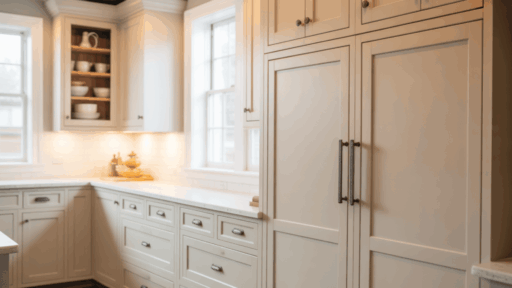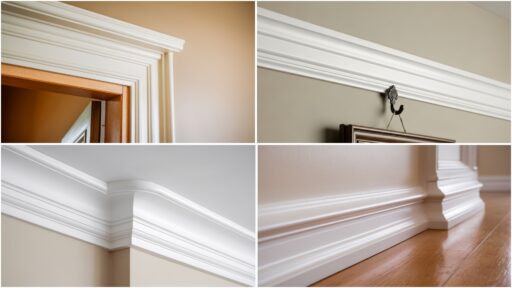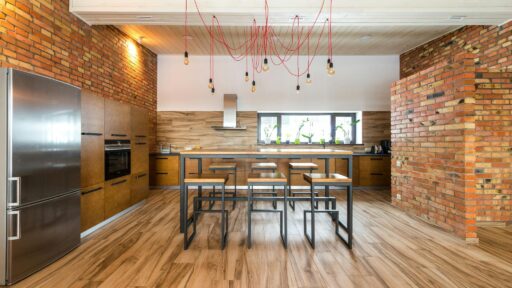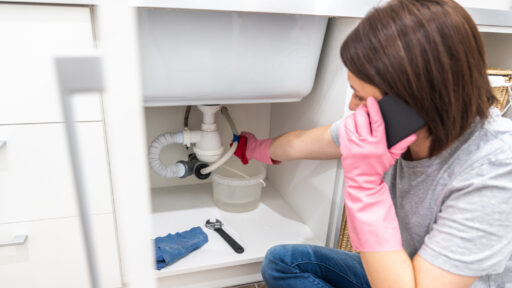Ever walked into a bathroom and felt like you were playing Tetris with your elbows? That’s what happens when the vanity depth is all wrong.
Bathroom vanities are the workhorses of your morning routine. They hold your toothbrush, store your towels, and give you a place to get ready each day.
But here’s the thing – getting the depth right makes all the difference between a bathroom that works and one that drives you crazy.
Most people don’t think about vanity depth until they’re bumping into walls or can’t open drawers properly. The good news?
This guide breaks down everything you need to know about vanity depth. No confusing jargon, just simple facts to help you make the right choice for your bathroom.
What is Vanity Depth?
Vanity depth is the measurement from the front edge of the vanity to the back wall. It shows how far the vanity sticks out into your bathroom space. This measurement matters more than you might think.
The depth affects the amount of countertop space you have and the amount of storage that fits inside. It also alters the appearance and feel of the vanity in your bathroom. Get it right, and your vanity fits perfectly. Get it wrong, and your bathroom feels cramped or awkward.
When shopping for vanities, you’ll see three main measurements: depth (front to back), width (side to side), and height (floor to countertop).
These three numbers work together to show how much space your vanity will take up and how well it will work for your daily routine.
Factors Affecting Vanity Depth
Not all bathrooms are created equal, and neither are vanity depth needs. Several key factors will help you figure out what depth works best for your space. Think of these as your decision-making checklist before you start shopping.
1. Bathroom Size and Layout
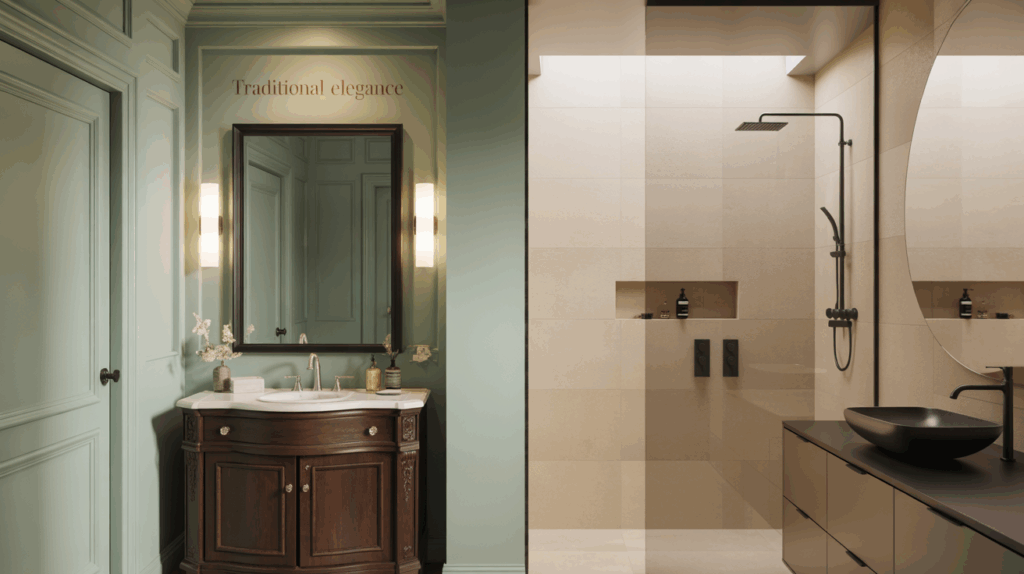
The size of your bathroom plays a big role in choosing the right vanity depth. In smaller bathrooms, a shallower vanity might be necessary to maintain adequate walking space and prevent the room from feeling cramped.
Conversely, larger bathrooms can accommodate deeper vanities without compromising functionality.
2. Available Space for Installation
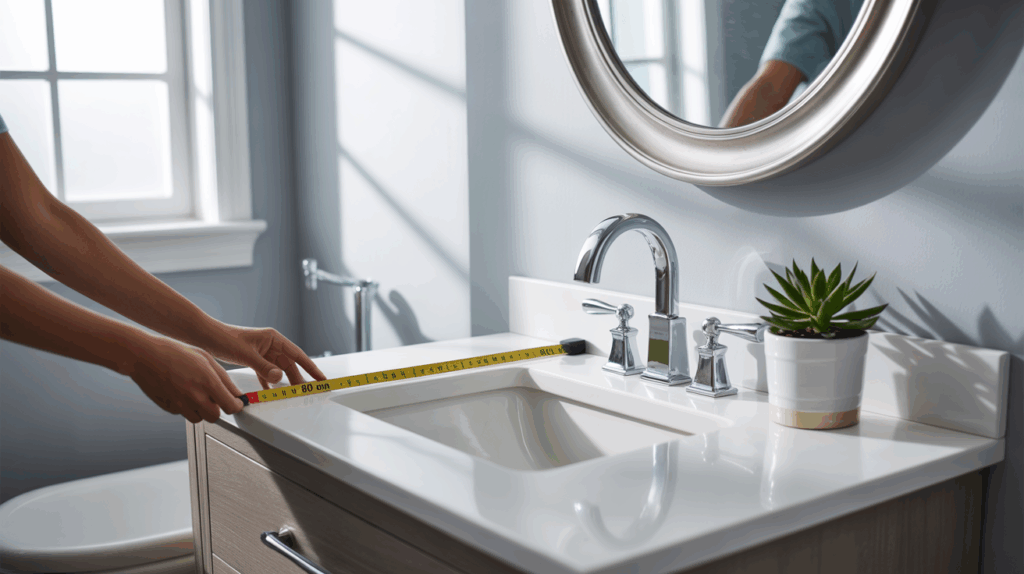
Before selecting a vanity depth, carefully assess the space available for installation. Consider the distance from the wall where the vanity will be placed to any obstacles like doors, toilets, or shower entrances.
This measurement will help determine whether you can use a standard depth or need to consider a shallower option.
3. Storage Needs
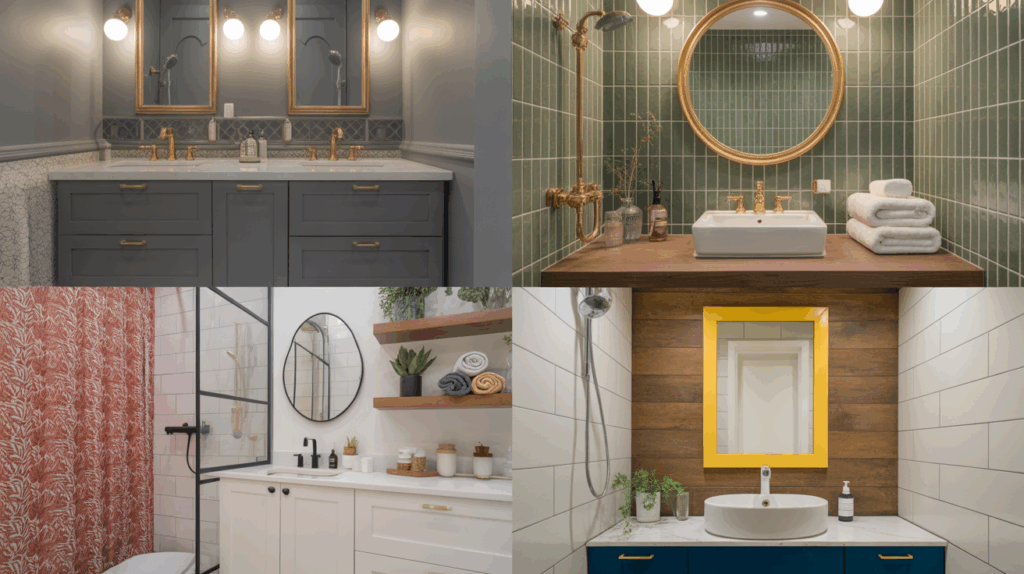
Deeper vanities typically offer more storage capacity, which can be particularly valuable in bathrooms with limited storage options elsewhere.
However, this additional storage comes with the trade-off of reduced floor space, which might not be suitable for all bathroom layouts.
4. Plumbing Considerations

Existing plumbing configurations can influence vanity depth selection. The location of water supply lines and drain pipes may require specific depth measurements to ensure proper installation without costly plumbing modifications.
How to Measure for a Vanity Depth
Measuring for the correct vanity depth requires careful attention to your bathroom’s specific layout:
- Measure the available space: Use a tape measure to determine the distance from the wall where the vanity will be installed to any obstacles or the opposite wall.
- Account for door clearance: Ensure there’s adequate space for bathroom doors to open fully without hitting the vanity.
- Consider walking space: Allow at least 24 inches of clear walking space in front of the vanity for comfortable use.
- Check plumbing locations: Note the positions of water supply lines and drain pipes to ensure compatibility with your chosen vanity depth.
Factor in other fixtures: Consider the placement of toilets, showers, and other bathroom fixtures to ensure your vanity depth won’t create crowding issues.
Customizing Vanity Depth
Sometimes standard vanity depths don’t perfectly fit your bathroom’s unique requirements. Custom vanities offer the flexibility to specify exact depths that work with your space and needs.
The benefits of custom depth vanities include perfect space utilization, the ability to work around unique plumbing configurations, and the opportunity to maximize storage in unusually shaped bathrooms.
However, custom vanities typically cost more than standard options and may require longer lead times for manufacturing and installation.
When considering custom depths, work with experienced professionals who can ensure your vanity meets building codes and functions properly with your plumbing system.
What If You Need More or Less Depth?
Sometimes the standard 18-21 inch range just doesn’t fit your situation. Maybe your bathroom is tiny, or perhaps you have tons of space to work with. Here’s when going shorter or longer makes sense.
Shallow Vanities (15-17 inches)
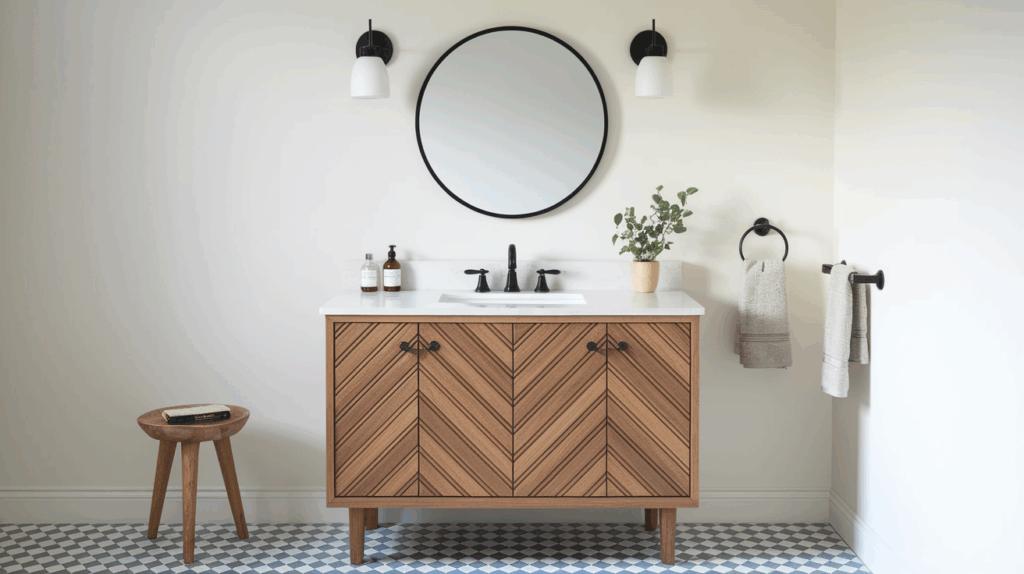
Shallow vanities work well in compact bathrooms, powder rooms, or spaces where maximizing floor area is priority.
While they offer less countertop and storage space, they can make small bathrooms feel more spacious and maintain better traffic flow.
Deep Vanities (22+ inches)
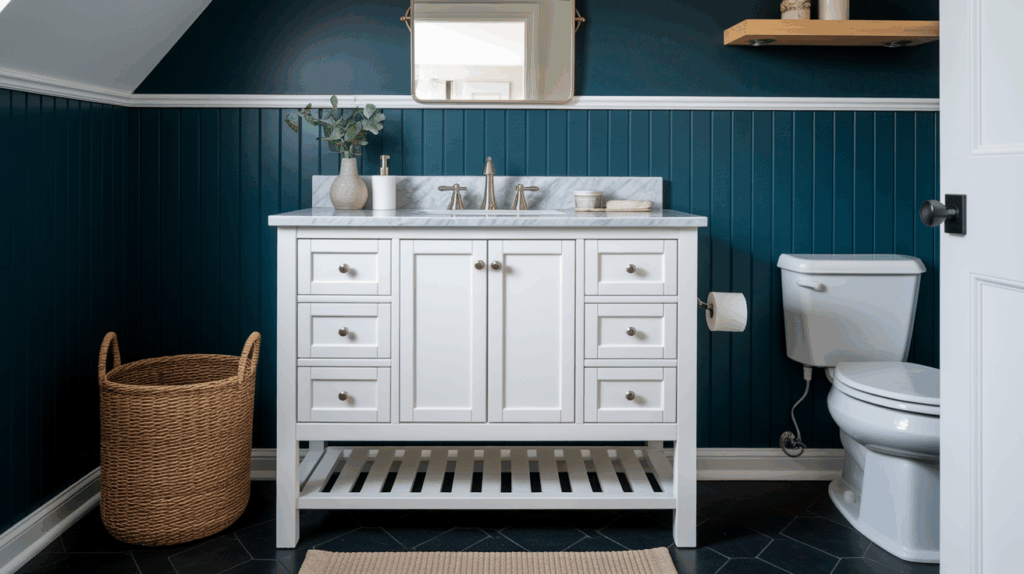
Deeper vanities provide additional countertop space and storage capacity, making them ideal for busy family bathrooms or master suites where multiple people need to use the space simultaneously.
They’re particularly beneficial when you need extra room for toiletries, towels, and other bathroom essentials.
Consider deeper vanities when you have ample bathroom space and prioritize storage and counter space over floor area.
Buying Tips & Sources
Making the right vanity depth choice involves more than just measurements – it requires understanding quality, value, and where to find the options you need.
Where to Shop
Online retailers offer extensive selections and competitive pricing, along with easy comparison shopping, detailed specifications, and reviews; however, they also present potential shipping and return challenges.
Custom cabinet makers offer unlimited depth customization with high-quality materials and construction, ensuring perfect fits in unique spaces. However, this comes at a higher cost and longer lead times.
Popular online options include Wayfair, Kholer, and Lowe’s, which offer comprehensive vanity collections with detailed specifications and customer reviews
Quality Indicators
When evaluating vanity quality, focus on construction materials and hardware standards that indicate long-term durability and performance.
Look for solid wood or high-quality plywood construction with dovetail drawer joints, soft-close hinges and drawer slides, and moisture-resistant finishes that can withstand the humidity of the bathroom.
These quality indicators often separate budget options from premium vanities and directly impact the longevity and functionality of your investment.
Budget Considerations
Vanity pricing varies significantly based on depth, materials, and the quality of construction. Shallow vanities typically range from $200 to $800 for basic models and $800 to $2,000 for higher-end options.
Standard vanities cost $300-$1,200 for basic models and $1,200-$3,500 for premium options. Deep vanities range from $500 to $1,800 for basic models and $ 1,800 to $5,000+ for luxury options.
Beyond the vanity cost, consider additional expenses, including:
- Installation Labor ($200-$800),
- Plumbing Modifications ($150-$500),
- Countertops and Sinks ($300-$2,000),
- Faucets and Fixtures ($100-$1,000).
Final Thoughts
Understanding standard vanity depth is fundamental to creating a functional and attractive bathroom space.
The standard range of 18-21 inches works well for most situations, but your specific bathroom size, layout, and needs should guide your final decision.
Take the time to carefully measure your space, consider your storage requirements, and think about how the vanity will fit into your daily routine.
Whether you choose a standard depth or opt for something custom, the right vanity depth will enhance both the functionality and enjoyment of your bathroom for years to come.
Remember to measure twice and purchase once – taking accurate measurements now will save you from costly mistakes and ensure your new vanity fits perfectly in your space.
FAQs
What is the Most Common Vanity Depth?
The most common vanity depth is 20 inches, which falls within the standard range and provides a good balance of functionality and space efficiency for most bathrooms.
Can You Install a Deeper Vanity in a Small Bathroom?
While possible, installing a deeper vanity in a small bathroom may compromise walking space and make the room feel cramped. It’s generally better to choose a shallower vanity that maintains comfortable traffic flow.
How Deep is a Standard Double Vanity?
Standard double vanities typically have the same depth as single vanities – usually 18-21 inches. The main difference is the width, which is generally 60-72 inches to accommodate two sinks and provide adequate counter space for both users.





